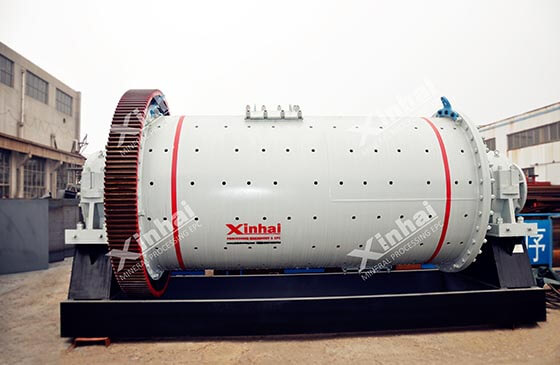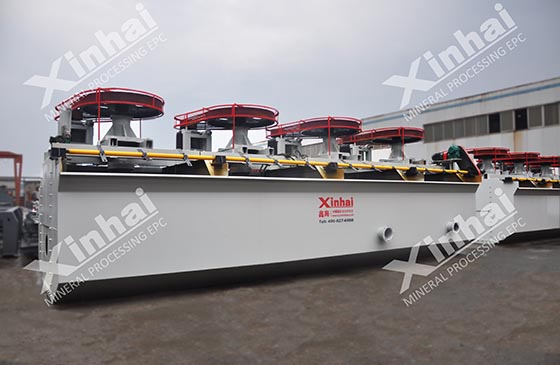

Warm Tip: If you want to know more details about equipment, solutions, etc, please click the button below for free consultation, or leave your requirements!
Graphite is an important industrial raw material, which is mainly divided into dense crystalline graphite, flake graphite and cryptocrystalline graphite. Among them, flake graphite has better floatability, lubricity and plasticity than other types of graphite and has the greatest industrial value. Different kind of graphite needs different process to extract, we had an article talked about this before.
The process of graphite beneficiation is mainly: crushing-grinding-separation-middling treatment-tailings treatment.
The hardness of graphite ore is generally medium-hard or medium-hard to soft. The grade of the raw ore is between 2-10%, and the crushing process is relatively simple. For plants of the same scale, relatively small models of crushing equipment can be used in graphite beneficiation. Three-stage open-circuit, two-stage open-circuit or one-stage open-circuit process are often used. If it is a small mine that processes weathered ore, the ore can be directly ground without crushing.
Commonly used equipment: jaw crusher, hammer crusher, impact crusher.

The size of graphite flakes is one of its important quality indicators, the larger the flakes, the higher the value. Therefore, we can use multi-stage grinding and multi-stage separation process in the separation to get large flake graphite as soon as possible.
The first stage of grinding is generally ground to about 40% of -200 mesh, then we can start flotation. After this first stage grinding and separation, we can then use multiple grinding and stripping, and multiple separations to get better beneficiation index.
In order to reduce the wear of graphite flakes, we can take the following methods:
To reduce the fineness of coarse grinding, columnar media or rod mills can be considered.
The first stage of regrinding can adopt overflow mill and columnar medium.
Under the same regrinding time, the smaller the number of regrinding stages, and the higher content of large flakes, that is, the content of large flakes is high in the short process.
Using rapid flotation, no collector flotation process
Commonly used equipment: ball mill, rod mill, vertical mill (zirconium ball), submerged spiral classifier.

Since crystalline graphite has natural floatability, and flake graphite has good floatability, so we basically use flotation method to process graphite.
Kerosene and diesel oil are usually used as collectors, 2# oil (pine oil) and 4# oil are used as foaming agents. These two can be added as original liquid without preparation. Lime and sodium carbonate are used as regulators, which need to be added by equipment, and water glass is used as inhibitor.
Commonly used equipment: flotation machine, flotation column

Due to the large number of grinding and flotation operations, many medium ore will be produced. Middling generally contains a large amount of graphite, if it is not processed, it will inevitably lead to a decrease in recovery rate and waste of resources. Therefore, the treatment of middling is an indispensable link in the graphite beneficiation process.
There are many processing methods for graphite flotation middling, from the sequential return to the centralized return, from the separate treatment to the combined process of multiple treatment that are currently used. The specific return process to be used needs to be determined by experiment.
Separate treatment: When the middling returned affects the quality of the final concentrates, it is treated separately as a series of products.
Return to the system: sequential return, centralized return, partial centralized return.
The sequential return is easy to configure, and we can use slurry pipes to connect the return middling and the former process directly. But the speed of discharging impurities is slow.
(Partially) centralized return has a fast impurity removal speed and good quality of the concentrate, but it needs to be dehydrated and pumped.
Because the concentration of middling is low, this will decrease the concentration of the beneficiation process and adversely affect flotation. We can gather the middling together for dehydration, and then return it to the separation process for processing.
Middling Return Principle: the grade of the middling and the return point should be the same.
The graphite concentrate needs to be dehydrated and dried. After dehydration, the lower the moisture, the better. It also needs to be classified and divided into several grades according to market demand after drying.
Graphite dry products need to be transported by wind and directly transported to the storage bin through pipelines, otherwise the graphite would disperse in the plant. Then we use screw conveyor to convey the product from the storage bin to the packaging machine.
Commonly used equipment: diaphragm filter press, centrifugal dehydrator, dryer, high square sieve, shaking sieve, gyratory sieve, screw conveyor, packaging machine.
The above is the basic beneficiation process for graphite ore. In the actual production, we can refer this article to choose a basic process, but mineral processing test and technicians’ advice are necessary too.
If you have any questions about this article or need more details, please contact our online customer service or leave a message below, we’ll contact you as soon as possible.
15 Stages of Graphite Processing
 0
0
 5000
5000


What Are the Differences Between CIP and CIL?
 11460
11460
 0
0